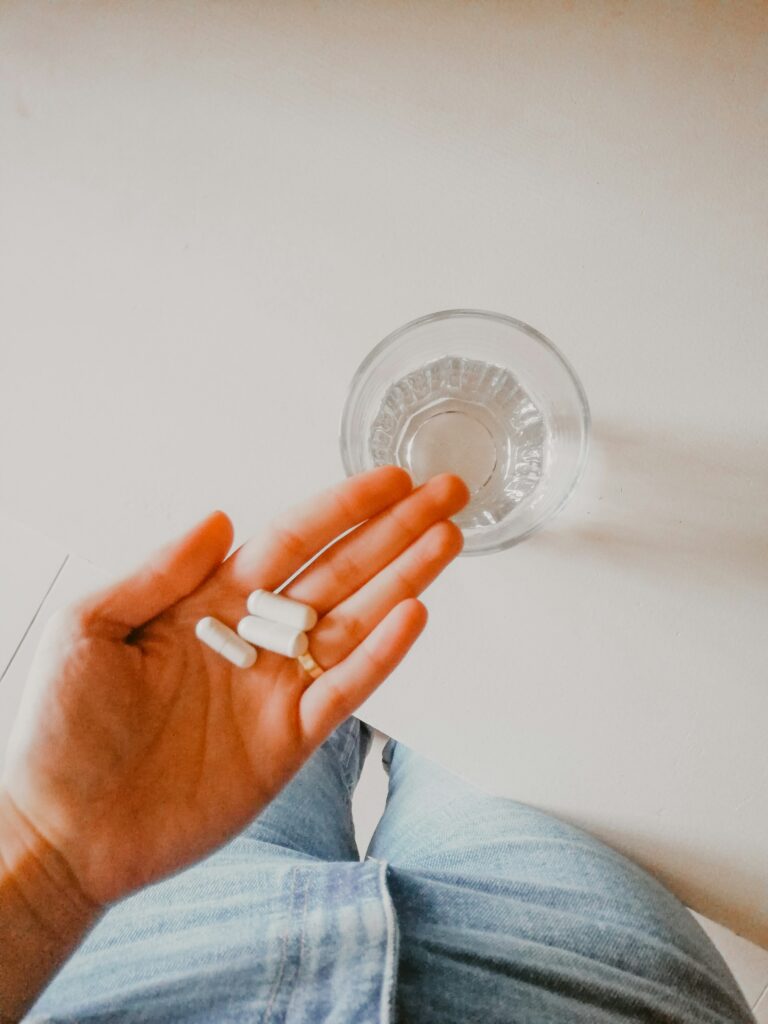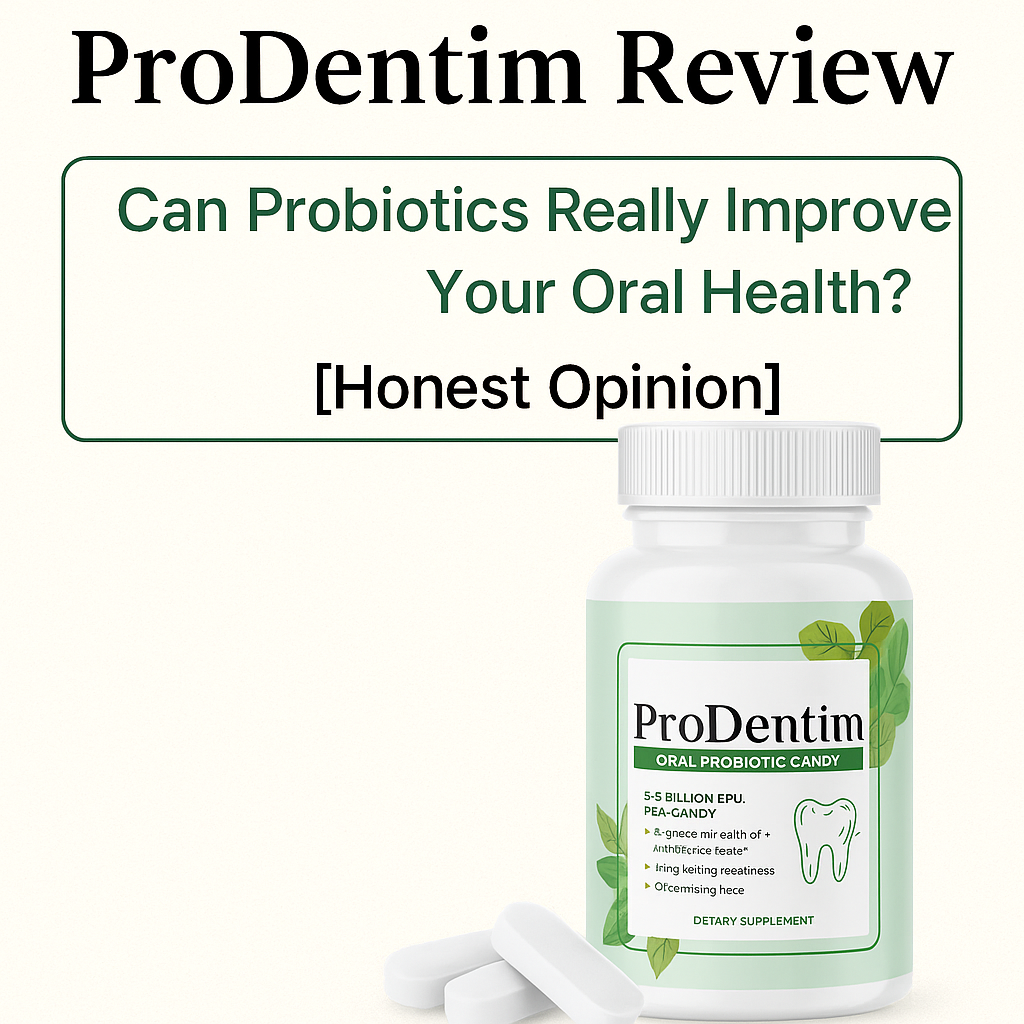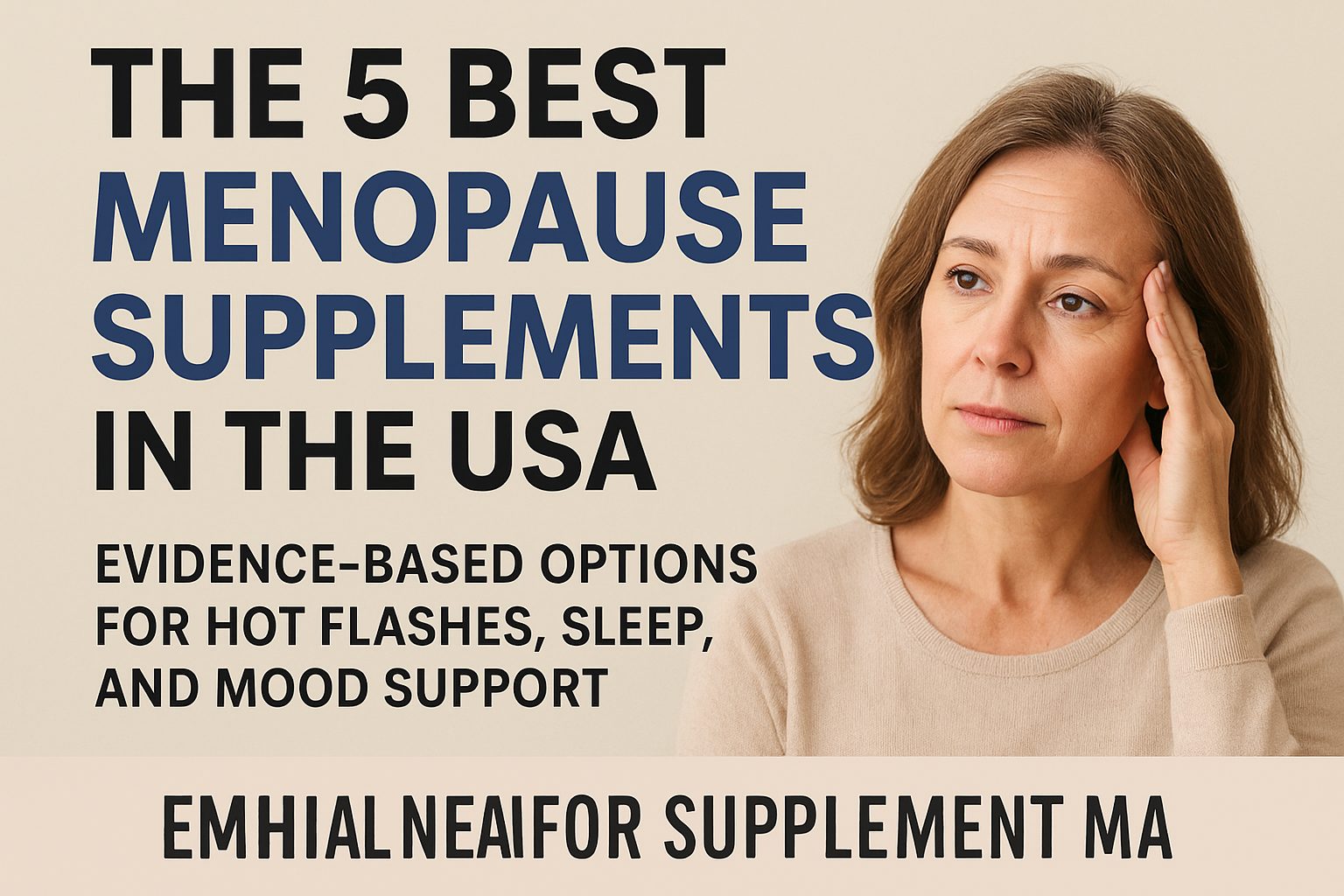Menopause is universal, but your symptom mix—hot flashes, sleep disruption, mood swings, brain fog, joint aches—can feel uniquely yours. For many women, prescription hormone therapy (or newer nonhormonal medicines) is the most effective option, especially within 10 years of the final period. Still, some prefer a supplement-first approach or want an adjunct to lifestyle changes. Below, you’ll find five widely available American supplements with the most meaningful—though still variable—human evidence behind them, plus practical guidance on dose, safety, and who each is best suited for. (Clinical references are included throughout.)
Important context: The North American Menopause Society (NAMS) emphasizes that hormone therapy remains the most effective treatment for vasomotor symptoms (VMS), but nonhormonal and select dietary supplements may help some women. Always review supplements with your healthcare provider, especially if you use medications or have a history of hormone-sensitive cancers. Menovelle Relieve Menopause Symptoms!

1) Estroven® Complete (ERr 731 — Rhapontic Rhubarb Extract)
What it is: A standardized extract from Rheum rhaponticum known as ERr 731—the same active used in several professional-grade products in the U.S.
Why it’s on this list: ERr 731 has multiple randomized and observational studies showing reductions in overall menopause symptom scores and improvements in hot flashes and quality of life over 12 weeks and beyond. PMC+1
How it may work: Unlike phytoestrogens that bind strongly to estrogen receptors, ERr 731 appears to have selective, modulatory activity that influences thermoregulation and central neurotransmission without measurable estrogenic stimulation of the endometrium in trials. (Mechanism continues to be studied.) PMC
Typical dose: Most studies used 4 mg ERr 731 once daily.
Ideal for: Women seeking a single-ingredient, nonhormonal option specifically for hot flashes, night sweats, and overall symptom burden.
Safety notes: In trials, ERr 731 was generally well tolerated; nonetheless, women with a history of estrogen-dependent cancers should consult an oncologist before use. Lippincott
2) EQUELLE® (Natural S-equol)
What it is: S-equol is a metabolite of the soy isoflavone daidzein. Only some people naturally produce it via gut bacteria; the supplement provides S-equol directly.
Why it’s on this list: Meta-analyses and clinical studies suggest S-equol reduces hot flash frequency and severity, particularly in “non-producers.” Evidence is not uniform across all populations, but overall signals are positive. PubMed+1MGH Saúde Mental da Mulher
How it may work: S-equol binds preferentially to estrogen receptor-β, which may affect thermoregulatory pathways tied to vasomotor symptoms. MGH Saúde Mental da Mulher
Typical dose: Products typically provide 10–20 mg S-equol twice daily (follow the labeled instructions).
Ideal for: Women open to soy-derived actives who primarily want hot flash relief and prefer a defined, single compound with human data.
Safety notes: Generally well tolerated. If you have a history of hormone-sensitive cancers, review with your clinician. Equol is not the same as generic “soy isoflavones”—its effects can differ. PubMed
3) Bonafide® Relizen® (Purified Swedish Flower Pollen Extract)
What it is: A hormone-free, purified pollen/cytoplasm extract used in Scandinavia for decades and now widely sold in the U.S.
Why it’s on this list: Early controlled trials and post-market studies suggest reductions in hot flashes and night sweats, with improvements in quality of life. While studies tend to be smaller than drug trials, outcomes are promising. Memorial Sloan Kettering’s integrative medicine database also notes supportive—but still limited—evidence. GoodRxMemorial Sloan Kettering Cancer Center
How it may work: Proposed mechanisms include modulation of the hypothalamic “thermostat” and neurotransmitters rather than direct estrogenic activity. Of note for women on tamoxifen, exploratory data indicate negligible CYP2D6 inhibition, suggesting low interaction risk—still, confirm with your oncology team. ma1.mdedge.com
Typical dose: Follow the brand’s labeled daily serving (often two tablets).
Ideal for: Women who want a non-phytoestrogen, non-hormonal option focused on hot flashes—especially if soy isn’t a fit.
Safety notes: Generally well tolerated; pollen-sensitive individuals should exercise caution. Memorial Sloan Kettering Cancer Center
4) Amberen® (Succinate-Based Complex)
What it is: A proprietary blend centered on amber acid (succinate) plus amino acids, minerals, and vitamin E.
Why it’s on this list: A pooled analysis and additional randomized, double-blind trials report improvements in vasomotor and other climacteric symptoms versus placebo. Newer research continues to explore efficacy and pairing with B-vitamin complexes. PMCTaylor & Francis OnlinePubMed
How it may work: Proposed mechanisms include effects on hypothalamic function and autonomic balance, potentially normalizing thermoregulation and stress responses (hypotheses based on study discussions). PMC
Typical dose: Per label (commonly two capsules daily for 90 days, then reassess).
Ideal for: Women with multi-symptom presentations (sleep, mood, hot flashes) who prefer a non-soy formula.
Safety notes: Trials report good tolerability; however, proprietary blends vary and exact contributions of each ingredient aren’t always clear. Review the full label if you take other supplements. PMC
5) Remifemin® (Standardized Black Cohosh Extract)
What it is: A long-used herbal extract (Actaea racemosa, formerly Cimicifuga racemosa), standardized in products like Remifemin.
Why it’s on this list (with caveats): Recent meta-analysis suggests moderate improvements in overall menopause symptoms and a smaller but significant effect on hot flashes; however, results across trials are inconsistent, and major societies have issued cautious or negative recommendations due to heterogeneity and mixed efficacy. In short: it helps some women, not all. PubMeddepts.washington.edu
How it may work: Likely non-estrogenic; may interact with neurotransmitter pathways (serotonergic, dopaminergic, GABAergic). Mechanism remains debated. npwomenshealthcare.com
Typical dose: Standardized extracts commonly provide the equivalent of 40–80 mg twice daily; follow the specific brand’s directions.
Ideal for: Women who prefer traditional botanicals and are comfortable with mixed evidence but want to try a standardized product with decades of use.
Safety notes: Generally well tolerated, but rare liver toxicity has been reported; avoid if you have liver disease and stop use with any signs of jaundice, dark urine, or unexplained fatigue. Evidence in breast cancer survivors is limited/variable—coordinate with your oncology team. Suplementos Dietéticos
How to Choose Among These Five
- Start from your top symptom(s).
- Blazing hot flashes/night sweats: ERr 731 (Estroven Complete), S-equol (EQUELLE), or pollen extract (Relizen) are the most directly targeted. PMCPubMedGoodRx
- Multi-symptom cluster (thermoregulation + mood/sleep): Consider Amberen or ERr 731 first. PMC+1
- Prefer single-actives when possible. You’ll better understand what works (ERr 731, S-equol, pollen extract each offer a defined active). PMCPubMed
- Check interactions and your medical history. If you’re on tamoxifen or other endocrine therapies, review any supplement with your clinician; preliminary data for pollen extract are reassuring, but decisions should be individualized. Liver disease? Avoid or closely monitor black cohosh. ma1.mdedge.comSuplementos Dietéticos
- Give it long enough—but not forever. Most studies assessed outcomes at 8–12 weeks. If you don’t notice meaningful benefit by then, reconsider your plan with your clinician. PMC
What the Evidence Does Not Say
- Supplements are not one-for-one substitutes for hormone therapy or the new Rx neurokinin-3 receptor antagonist (fezolinetant), which have stronger and more consistent effects on vasomotor symptoms. Consider discussing these with your provider if symptoms are severe. Lippincott
- “Menopause multivitamins” without targeted actives rarely help hot flashes. Look for products with studied ingredients and published human trials—ideally randomized and controlled. Lippincott
Practical Dosing & Stacking Tips
- Choose one primary agent and evaluate it for 8–12 weeks:
- ERr 731: 4 mg daily
- S-equol: commonly 10–20 mg twice daily
- Pollen extract (Relizen): per label (often two tablets daily)
- Amberen: per label (often two capsules daily)
- Black cohosh: standardized extract, 40–80 mg twice daily
Do not start multiple new actives simultaneously—if you improve (or react), you won’t know which ingredient did it. PMCPubMed
- Lifestyle amplifiers: Consistent sleep timing, exercise (especially resistance training for bone and metabolic health), cooling strategies at night, and limiting alcohol can make supplement effects more noticeable.
Safety, Quality & When to Seek Medical Care
- Third-party testing: Look for NSF, USP, or Informed Choice/ConsumerLab-tested brands when available. U.S. supplements aren’t pre-approved by the FDA; quality varies.
- Stop and call your clinician if you develop chest pain, unusual headaches, fainting, vaginal bleeding after 12 months without periods, yellowing of the skin/eyes, dark urine, or severe mood changes.
- Breast cancer history or high risk: Coordinate with your oncology and gynecology teams before starting any supplement. Some options (e.g., pollen extract) may be considered but require individualized assessment. Memorial Sloan Kettering Cancer Centerma1.mdedge.com.

Bottom Line
If you want a science-forward, nonhormonal start for menopausal symptoms in the U.S., prioritize ERr 731 (Estroven Complete), S-equol (EQUELLE), pollen extract (Relizen), and Amberen based on your symptom profile, reserving standardized black cohosh (Remifemin) as a traditional option with mixed evidence. Trial one product at a time for 8–12 weeks, track symptoms (e.g., nightly hot-flash counts, a simple 0–10 heat scale), and be ready to pivot to better-supported medical therapies if results are modest—your comfort and quality of life come first. PMC+1PubMedGoodRxdepts.washington.edu
References (selected)
- NAMS Nonhormone Therapy Position Statement (2023): overall guidance on nonhormonal options and strength of evidence. LippincottPubMed
- ERr 731 (Rhapontic rhubarb) randomized and observational data. PMC+1
- S-equol meta-analysis and clinical studies. PubMed+1MGH Saúde Mental da Mulher
- Pollen extract evidence and interaction considerations. GoodRxMemorial Sloan Kettering Cancer Centerma1.mdedge.com
- Amberen succinate-based trials and pooled analysis. PMCTaylor & Francis OnlinePubMed
- Black cohosh: meta-analysis vs. guideline caution; safety notes. PubMeddepts.washington.eduSuplementos Dietéticos
This article is for educational purposes and is not medical advice.






1 thought on “The 5 Best U.S. Menopause Supplements (Evidence-Informed Guide)”